TL;DR:
Based on insights from 6 major studies (Brevo, HubSpot, GetResponse, Omnisend, Salesforce, and Moosend), the best general time to send emails is Tuesday or Thursday between 9 AM and 11 AM.
✅ For B2B, stick to weekday mornings (especially Tuesday at 10 AM)
✅ For B2C, experiment with Friday evenings or Sunday mornings
✅ Match timing to campaign type: newsletters on Mondays, promos on Thursdays, abandoned carts at 10 AM
✅ Use smart scheduling tools like GetResponse’s Perfect Timing or MailerLite’s Smart Sending to auto-optimize
✅ Combine with OptinMonster’s behavior-based opt-ins to build an engaged list that responds, no matter the hour
The golden rule: Test, segment, and adapt. Industry trends are a guide, but your audience holds the real answer.
At OptinMonster, we help over 1.2 million websites grow their email lists, and one question keeps coming up from our users: “When is the best time to send my emails?”
We’ve seen it across industries, from eCommerce brands running flash sales to SaaS companies announcing feature rollouts. The timing of an email can make or break engagement.
So in this post, I’ve compiled the most recent research from top platforms like Brevo, GetResponse, Omnisend, and HubSpot, and paired it with what we’ve learned from thousands of customer campaigns using OptinMonster-powered opt-ins.
Spoiler: There’s no one-size-fits-all. But the data is clear, certain days and times consistently outperform, and I’ll help you understand how to apply those patterns to your audience.
Timing Matter But Engagement Matters More!
You can send emails at the perfect time, but if your list isn’t engaged, it won’t matter. With OptinMonster, you can build a high-quality email list of subscribers who actually want to open your emails, boosting your open rates, click-throughs, and conversions no matter when you hit send!
✅ Attract engaged subscribers with irresistible opt-ins
✅ Use smart segmentation for personalized email timing
✅ Reduce unsubscribes and improve deliverability
Pro Tip: Use OptinMonster’s Exit-Intent® popups to capture abandoning visitors and turn them into loyal subscribers before they leave!
🎯 Start building an engaged email list today! Try OptinMonster Now →
How We Researched This
To identify the best times to send emails in 2025, we reviewed and synthesized findings from six of the most trusted studies in the email marketing industry:
These studies analyzed millions of emails across different industries, business models (B2B and B2C), and global time zones.
We didn’t just look at open rates, we considered click-through rates, conversions, and engagement by audience type and campaign goal. Our goal was to surface consistent patterns that marketers like you can apply today.
When Is the Best Time To Send an Email?
Most emails perform best on weekdays between 9 AM and 11 AM, with additional engagement peaks in the afternoon and early evening.
According to research, the best time to send an email is between 9 a.m. and 11 a.m. Additional engagement peaks can occur in the early afternoon (1–2 p.m.) and evening (5–6 p.m.).
For B2B emails, sending during work hours (especially mid-morning) yields better results. In contrast, B2C marketers can experiment with emails during weekends or evening hours because that’s when individual consumers are home and able to check personal emails with more focus.
Studies on the Best Time To Send Email
I scoured the web and compiled open rate data from the most authoritative research studies before confirming that Tuesdays and Thursdays between 9am and 11am are the best times to send email. But there is nuance to that answer that could be helpful for your unique business, so I’ve also summarized those studies before so you can make the best decisions for YOUR business.
Here’s what they say:
1. Brevo’s Insights
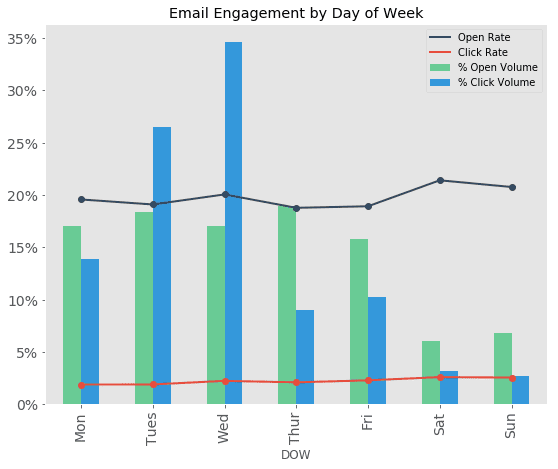
If you just glance at the chart above, you’d think that you should send all important promotional emails on Wednesdays.
However, Brevo’s full study emphasizes the importance of industry-specific timings.
Different industries vary in terms of the best workdays and times of day, although midweek emails perform best for most industries. Saturdays and Sundays are the worst days among all the industries Brevo included in their study.
Here is an overview of Brevo’s findings:
- Best time to send email by business type:
- B2B Professional Services: Monday or Tuesday, 8-10 a.m.
- E-commerce: Tuesday or Thursday at 10 a.m.
- SaaS (Software as a Service): Tuesday or Thursday, 2-3 p.m.
- NGOs (Non-Governmental Organizations): Tuesday or Thursday, 3-4 p.m.
- Marketing Services: Wednesday at 4 p.m.
- Offline Retail or Hospitality: Thursday, 8-10 a.m.
- Recommendation: Understand the nature of your business and the daily routines of your target audience. This will help you optimize the send times for better engagement.
2. GetResponse’s Research
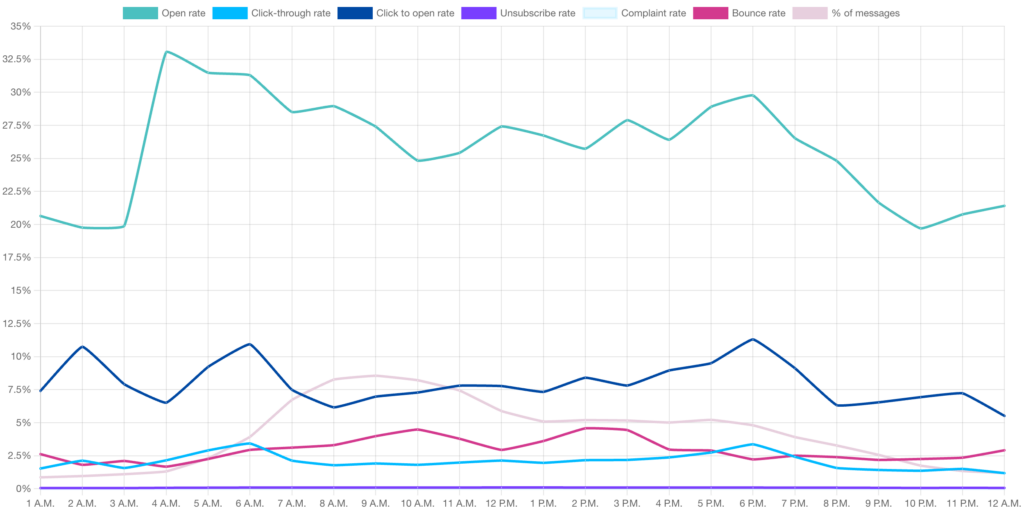
GetResponse’s data suggests that while there are peak times for engagement, it’s essential to consider the nature of the email.
For instance, many people check their email on their phones as soon as they wake up or at their desks when they first get to work.
- Best time to send an email: One email in the early morning (4-6 a.m.) and a second email later in the afternoon (5-7 p.m.).
- Recommendation: Monitor your metrics and adjust your strategies based on results. Testing different days and times can help in optimizing email campaigns.
3. Omnisend’s Study
Omnisend’s research highlights an important point: The best time to send an email varies depending on your primary goal for that campaign.
Omnisend’s data charts are divided based on the goal: open rate, click-through rate (CTR), and sales conversion rate.
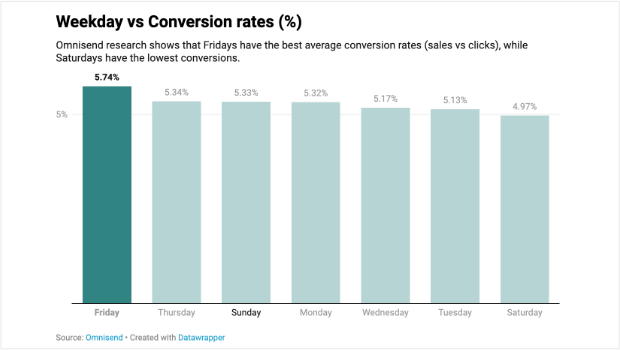
For instance, the chart above shows users are most likely to make purchases through your emails on Fridays. The best days for CTR are Friday and Sunday, while open rates are best on Tuesday, Wednesday, and Thursday.
This study goes beyond comparing different weekdays. They also have data on each day of the month. Open rates and CTR go up and down throughout the month. Sales conversions, however, are definitely highest on the first day of the month
While there are general patterns, Omnisend also points out that individual behaviors can be quite unique. That’s why it’s so important to understand your target audience. The study also emphasizes the significance of combining emails with other channels, like SMS, for better engagement.
- Best time to send email:
- Highest open rates: Tuesdays
- Best for conversions: Fridays
- Day of the month: You may also see better sales through emails sent on the first day of the month.
- Best time of day: 8 a.m., 2 p.m., or 5 p.m.
- Recommendation: Determine the primary goal of each email campaign, and that will help you decide the best day to send it. Also, while general trends provide a starting point, always be ready to adapt based on your audience’s behavior. Multi-channel strategies can also enhance engagement.
4. HubSpot’s Analysis
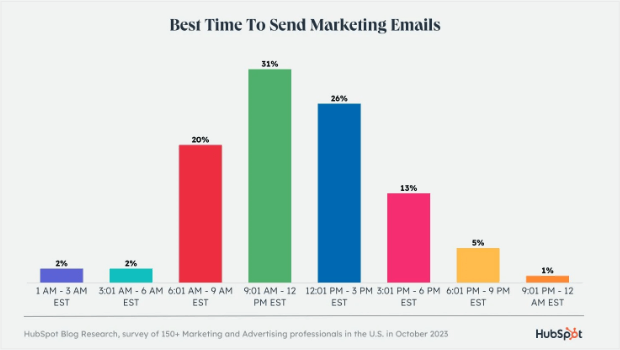
HubSpot surveyed over 150 marketers in their email timing study. Their data underscores the importance of understanding the difference between B2B and B2C audiences.
The bar graph above shows that 31% of the marketers surveyed get the best engagement on marketing emails sent between 9:01 a.m. and 12 p.m. EST. B2B businesses prefer the same time span but at a much higher rate of 47.9%.
So while 9:01 a.m. to 12 p.m. is the best time for both B2C and B2B, B2C marketers have more flexibility. Also, Monday emails are an exception: the best time for those is 6:01 a.m. to 9 a.m. EST.
- Best time to send email: Tuesdays between 9:01 a.m. and 12 p.m. EST. Emails sent after 6 p.m. get by far the lowest engagement, so late evening and night are the worst times.
- Recommendation: Segment your audience, and tailor your send times based on user behavior and demographics. This can lead to better engagement rates.
5. Salesforce’s Research

This Salesforce data from 2021 is a little older than the other studies on our list. However, it still provides insights you can learn from. Specifically, Salesforce emphasizes the dynamic nature of optimal send times.
Their system, built with Spark, scales for customers with varying data volumes and uses an assembly model structure to provide optimal recommendations.
- Best time to send email: 8-10 a.m. in the recipient’s local time zone is the best time to send emails.
- Recommendation: Consider the recipient’s behavior, timezone, and other factors. Personalization is key, and automated systems can help in determining the best send times.
6. Moosend’s Analysis
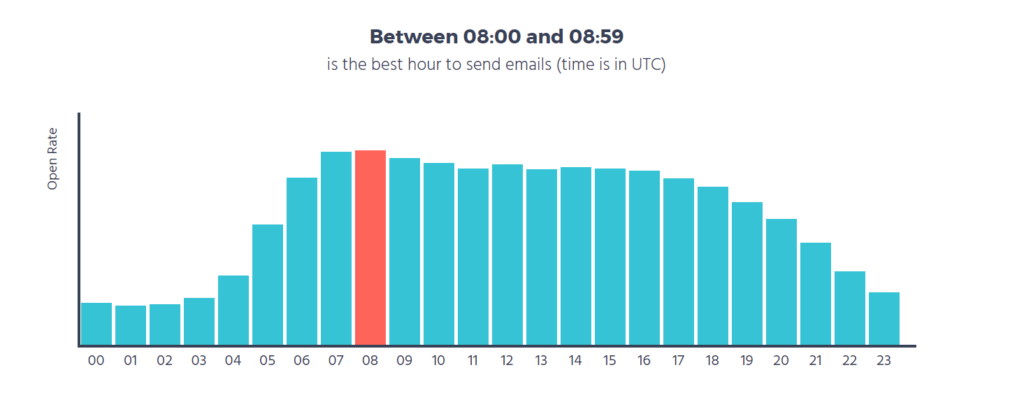
Moosend emphasizes the importance of metrics like email open rate, click-through rate, and conversion rate.
Their study also highlights the significance of refining subject lines and leveraging email marketing automation.
- Best time to send email: Thursdays have the highest open rate, followed by Tuesdays as the second-best day. 8-9 a.m. see higher open rates.
- Recommendation: While timing is crucial, other elements like content quality, email subject lines, and personalization play a significant role in the success of email campaigns.
While each study provides valuable insights, the overarching theme is clear: understanding your audience’s behavior is crucial.
Best Time to Send Emails by Campaign Type
Not all emails are created equal and neither is their timing. Based on aggregated insights from MailerLite, GetResponse, and our own analysis, here’s when to send different types of emails for maximum impact:
Newsletters
Best Time:
- Monday or Tuesday at 4–6 PM
Why:
Your audience is settling into the week and more likely to engage with informative, content-rich emails. Monday consistently shows strong open rates (MailerLite reports 53.4% average at 4 PM).
Works best for: Creators, educators, SaaS content marketing.
Promotions or Sales Offers
Best Time:
- Thursday or Friday at 6–7 PM
Why:
Subscribers are winding down for the weekend, ready to shop or explore deals. Engagement peaks late on Fridays (52.7% open rate at 6 PM, per MailerLite).
Works best for: E-commerce, product launches, seasonal campaigns.
Surveys & Feedback Requests
Best Time:
- Sunday at 9 AM or Wednesday at 4 PM
Why:
Surveys do better when subscribers aren’t distracted. Sunday mornings (Mailerlite: 49.6% open rate) and mid-week afternoons strike the right balance between attention and low competition in the inbox.
Works best for: SaaS, education, NPS follow-ups, event feedback.
Abandoned Cart / Reminder Emails
Best Time:
- Within 1 hour of initial trigger or at 10 AM next business day
Why:
For behavior-triggered emails, recency is king. But if you’re batching these, mid-morning tends to outperform early or late-day sends (as confirmed by multiple studies including Moosend and Omnisend).
Works best for: Retail, digital products, webinar no-shows.
Transactional / Product Updates
Best Time:
- Any weekday at 8–10 AM, based on user time zone
Why:
These emails are expected and functional. Send them when users are checking their inboxes with the intent to act.
Works best for: Order confirmations, app feature releases, usage reports.
Internal Company or B2B Emails
Best Time:
- Tuesday or Wednesday at 10 AM–12 PM
Why:
This is peak productivity window for many professionals, especially in B2B. HubSpot’s data backs this up with 47.9% of B2B marketers seeing best results mid-morning.
Works best for: Whitepapers, partnership outreach, investor updates.
Pro Tip: Use your email platform’s segmenting and smart send features to time each email type differently—don’t treat your list as one-size-fits-all.
Smart Scheduling Tools: How to Send Emails at the Right Time
Timing your emails manually is fine. But in 2025, AI-powered send-time optimization tools are changing the game. These tools analyze subscriber behavior to automatically deliver emails when each person is most likely to engage.
Here’s how the top platforms compare and how OptinMonster fits into the mix:
MailerLite: Smart Sending
What it does:
MailerLite analyzes historical open/click data for each subscriber and sends emails in staggered batches, timing delivery based on when each person usually engages.
Use case:
Great for creators and SMBs who want better engagement without guessing send times.
GetResponse: Perfect Timing AI
What it does:
GetResponse’s AI-based delivery prediction feature studies user behavior across time zones and content types. It uses that data to predict the optimal send moment for maximum opens and clicks.
Use case:
Ideal for mid-size to enterprise campaigns needing dynamic delivery windows across global lists.
Brevo (Sendinblue): Send Time Optimization
What it does:
Brevo’s algorithm automatically selects the best hour and minute to send each email for every contact, based on engagement history. No rules or segments needed.
Use case:
Best for businesses with international audiences or time-zone-spanning newsletters.
OptinMonster: Timing Meets Targeting
While OptinMonster isn’t an email platform itself, it plays a critical role in feeding smarter send-time systems. Here’s how:
- Behavior-based popups: Trigger opt-ins when visitors are most engaged—capturing active subscribers who will respond better to future sends.
- Lead tagging + integrations: Pass real-time lead activity and signup timestamps to your ESP (MailerLite, GetResponse, Brevo, etc.) so that Smart Sending tools get smarter.
- Geo-targeting and Time-Zone Logic: Use location-based campaigns to capture contextual data—which can be used by ESPs to optimize future delivery windows.
Pro Tip: Use OptinMonster’s lead tags + webhook integrations to sync user behavior directly to your email platform’s smart scheduling engine.
Want help building your first smart-timed campaign? Explore OptinMonster integrations with top email platforms.
How to Find Your Best Time to Send Emails
While industry studies can point you in the right direction, the most effective send time is the one that works for your audience. That’s why testing is essential.
Here’s a proven, step-by-step methodology we recommend at OptinMonster considering you’re using an email marketing platform with A/B testing or smart scheduling capabilities:
Step 1: Segment Your List
Start with basic segments like:
- B2B vs B2C
- Time zone
- Past engagement (high vs low openers)
Segmenting helps ensure your test results are actionable and not diluted across vastly different behaviors.
Step 2: Choose Your Variables
Focus on one timing variable per test:
- Morning vs afternoon
- Tuesday vs Thursday
- Send immediately vs Smart Sending
Don’t test time + subject line + content in the same split—you won’t know what caused the change.
Step 3: Set Up an A/B Test
Most platforms let you send the same email at two different times to a portion of your list (e.g. 20% of recipients). The winning version is then sent to the remaining 80%.
Example Test:
- Version A: Sent Tuesday at 10 AM
- Version B: Sent Thursday at 4 PM
- Winning metric: Click-through rate
Step 4: Use Auto-Resend for Non-Openers
Many subscribers will miss your first send. Use auto-resend features to follow up:
- 24–48 hours later
- New subject line or slight tweak
- Same core message, timed when they might be more available
Step 5: Layer in Behavior-Based Triggers
After timing, the next best optimization is contextual relevance. Use:
- Link triggers (send follow-up emails when a subscriber clicks a certain link)
- Browse abandonment or time-on-page logic from OptinMonster to sync email triggers with real-time behavior
Step 6: Track & Adapt
Use your email platform’s analytics to track:
- Open rates by time/day
- Clicks by campaign type
- Conversions from follow-up sends
After 2–3 rounds of tests, you’ll have your personal timing blueprint.
Expert Tip: Integrate OptinMonster with your ESP (like MailerLite or GetResponse) to pass real-time signup and engagement data, which improves send-time predictions over time.
FAQs
1. What is the best day to send marketing emails in 2025?
Tuesday and Monday are the top-performing days overall, based on open rates across multiple studies. B2B emails do best on Tuesday mornings, while B2C and promotions often perform well on Friday evenings.
2. What time of day should I send emails for better open rates?
The highest email open rates in 2025 are seen between 3 PM and 7 PM on weekdays, particularly 4 PM–6 PM. For weekends, 9 AM on Sunday shows strong engagement, especially for non-commercial content like newsletters or surveys.
3. Is it better to send emails in the morning or afternoon?
It depends on your campaign type. Newsletters and transactional emails perform well in the morning (8–10 AM), while promotions and content emails get better engagement in the late afternoon to early evening (4–7 PM).
4. Should I send emails on weekends?
Generally, weekdays outperform weekends in total opens and clicks. However, Sunday mornings (around 9 AM) can be a good time to stand out in the inbox with light content like surveys or blog updates due to lower competition.
5. How do I find the best time to send emails to my audience?
Start by testing different days and times, then review your open and click-through rates. Use tools like MailerLite’s Smart Sending or GetResponse’s Perfect Timing to automatically deliver emails when your subscribers are most likely to engage.
As promised, here are even more resources to help you improve your email open rates and click through rates.
- What is a Good Open Rate (and how to measure yours)?
- What is a Good Click Through Rate?
- How to Create an Effective Email Autoresponder Series
- Small Business Email Marketing: 7 (Easy) Tips for Growth
- 13 Benefits of Email Marketing: Why (and How) to Grow Your List
What are the best times to send emails times for you? Let us know in the comments below.

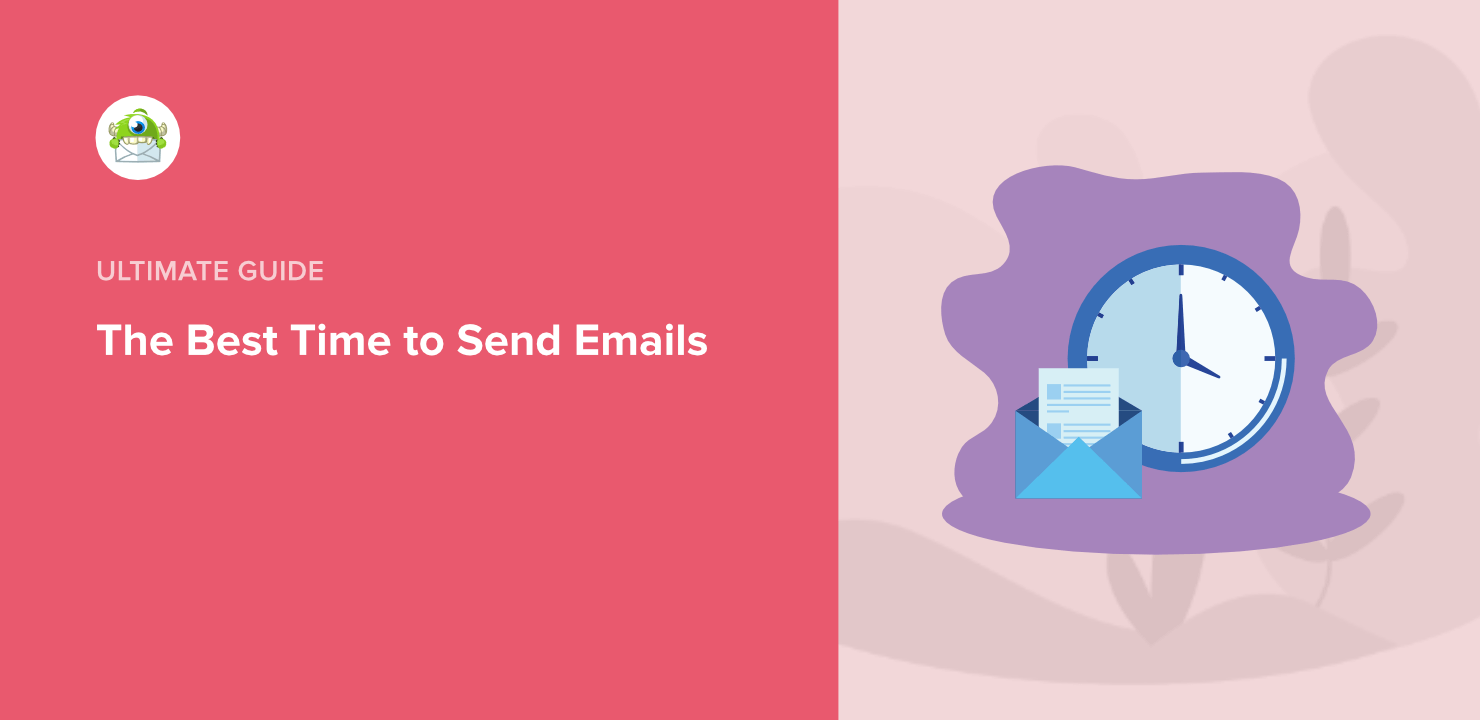
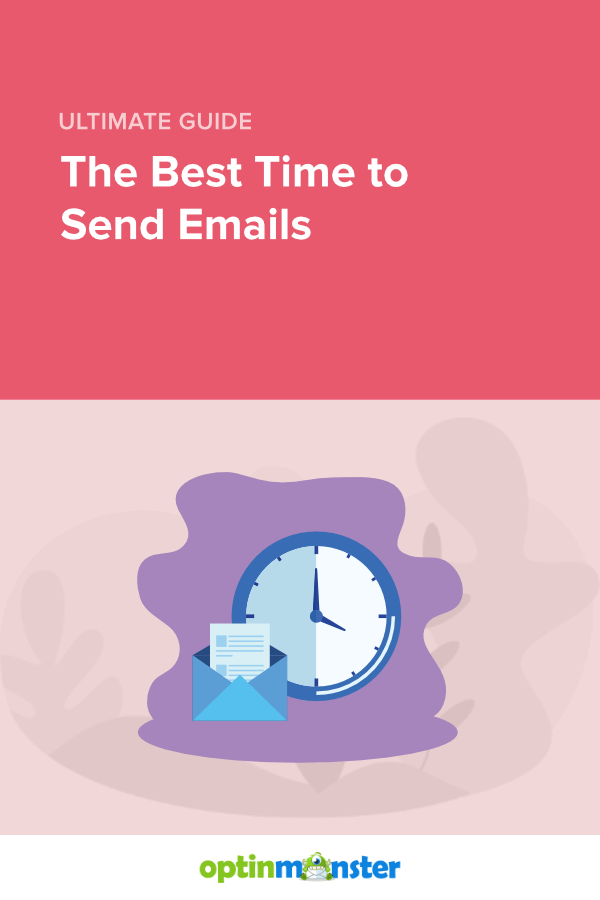



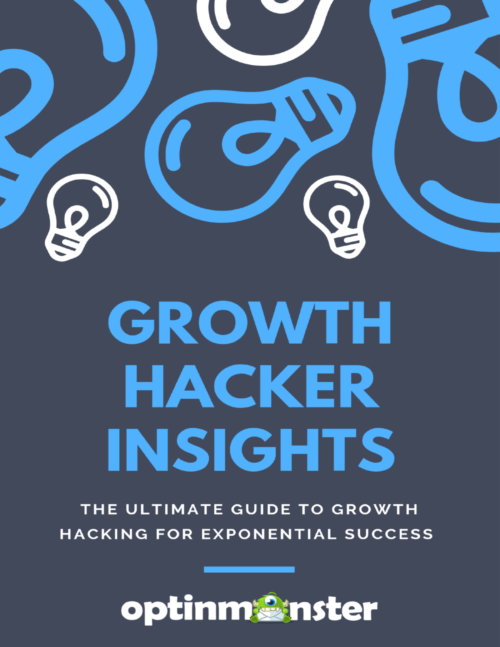

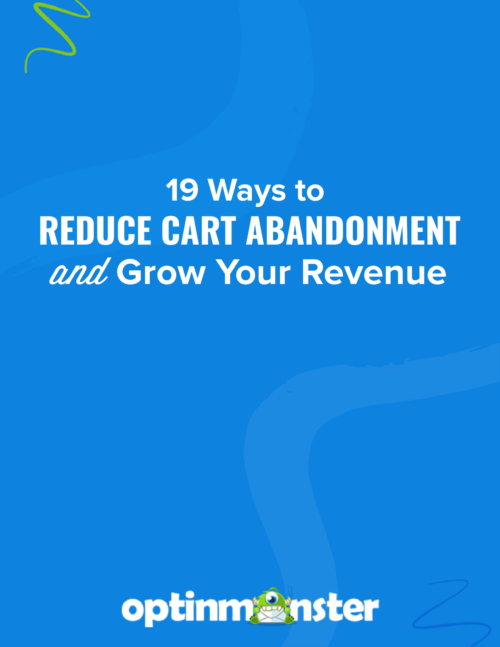



Add a Comment